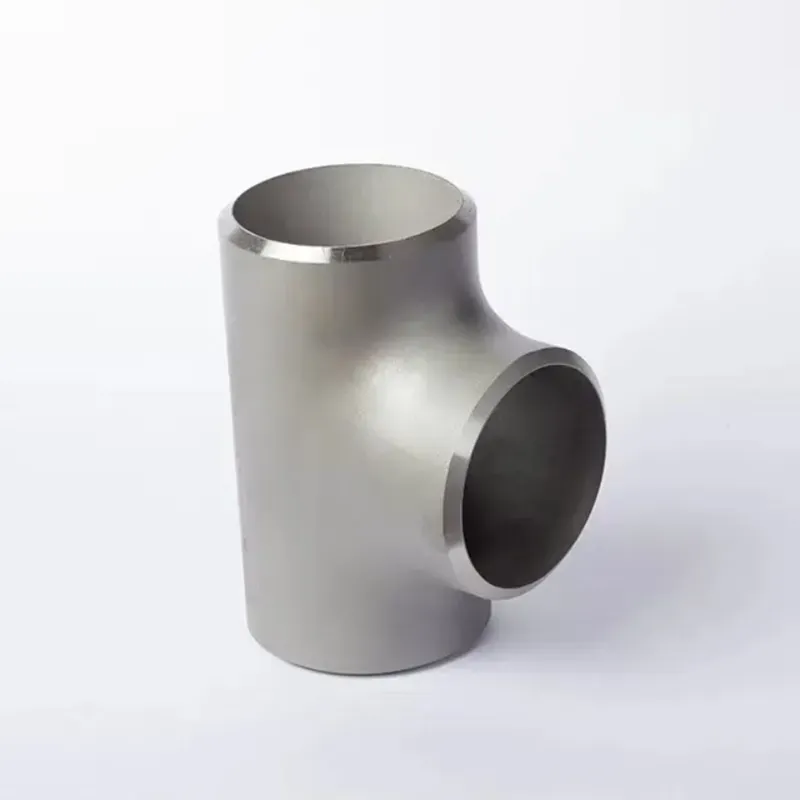-
Cangzhou Yulong Steel Co., Ltd.
-
Phone:
+86 13303177267 -
Email:
admin@ylsteelfittings.com
- English
- Arabic
- Italian
- Spanish
- Portuguese
- German
- kazakh
- Persian
- Greek
- French
- Russian
- Polish
- Thai
- Indonesian
- Vietnamese
- Zulu
- Korean
- Uzbek
- Hindi
- Serbian
- Malay
- Ukrainian
- Gujarati
- Haitian Creole
- hausa
- hawaiian
- Hebrew
- Miao
- Hungarian
- Icelandic
- igbo
- irish
- Japanese
- Javanese
- Kannada
- Khmer
- Rwandese
- Afrikaans
- Albanian
- Amharic
- Armenian
- Azerbaijani
- Basque
- Belarusian
- Bengali
- Bosnian
- Bulgarian
- Catalan
- Cebuano
- China
- China (Taiwan)
- Corsican
- Croatian
- Czech
- Danish
- Esperanto
- Estonian
- Finnish
- Frisian
- Galician
- Georgian
- Kurdish
- Kyrgyz
- Lao
- Latin
- Latvian
- Lithuanian
- Luxembourgish
- Macedonian
- Malgashi
- Malayalam
- Maltese
- Maori
- Marathi
- Mongolian
- Myanmar
- Nepali
- Norwegian
- Norwegian
- Occitan
- Pashto
- Dutch
- Punjabi
- Romanian
- Samoan
- Scottish Gaelic
- Sesotho
- Shona
- Sindhi
- Sinhala
- Slovak
- Slovenian
- Somali
- Sundanese
- Swahili
- Swedish
- Tagalog
- Tajik
- Tamil
- Tatar
- Telugu
- Turkish
- Turkmen
- Urdu
- Uighur
- Welsh
- Bantu
- Yiddish
- Yoruba

Dec . 19, 2024 04:58 Back to list
4 x 3 concentric reducer
Understanding the 4 x 3 Concentric Reducer Applications, Benefits, and Design
In various industries, especially in manufacturing and construction, the efficiency of fluid transport is paramount. One of the components that plays a crucial role in this aspect is the concentric reducer. A specific type, the 4 x 3 concentric reducer, is widely used in piping systems to facilitate smooth transitions between different pipe diameters.
What is a Concentric Reducer?
A concentric reducer is a component used in piping systems to connect two pipes of different diameters, allowing fluid to flow from a larger diameter to a smaller one. The term concentric refers to the design where the center of the pipe halves are aligned, making the transition smooth and efficient. This design minimizes turbulence and maintains a steady flow, which is essential for reducing energy costs and enhancing system performance.
Technical Specifications of a 4 x 3 Concentric Reducer
The designation 4 x 3 refers to the diameters of the larger and smaller ends of the reducer, respectively. This means the larger end has a diameter of 4 inches, and the smaller end is 3 inches. Typically made from durable materials such as stainless steel, carbon steel, or PVC, these reducers are designed to withstand varying pressure and temperature conditions, making them suitable for diverse applications.
Applications
The 4 x 3 concentric reducer is commonly used in various applications across different industries
1. Water Supply Systems Used in municipal water supply lines to manage flow rates as water moves from larger distribution pipes to smaller service lines.
2. Oil and Gas In oil refineries and gas plants, these reducers help in transporting crude oil and natural gas, where managing flow efficiently is critical for safety and operational efficiency.
3. HVAC Systems In heating, ventilation, and air conditioning systems, they facilitate smooth transitions in ductwork, optimizing airflow and energy consumption.
4. Chemical Processing In chemical plants, the reducer allows for the safe transport of fluids and gases, ensuring that there is no back pressure which could lead to spills or leaks.
5. Food and Beverage Used in pipelines that transport various liquids, ensuring that the flow remains steady to maintain product quality.
Benefits of Using a Concentric Reducer
4 x 3 concentric reducer

- Enhanced Flow Efficiency The streamlined design minimizes friction losses, allowing fluids to flow smoothly and efficiently, reducing energy consumption
.- Reduced Pressure Drop By providing a gradual transition, concentric reducers help prevent sudden changes in pressure, which can cause cavitation or damage to the system.
- Compact Design Their ability to connect pipes of different sizes in a compact form makes them ideal for tight spaces, common in many installations.
- Corrosion Resistance Many materials used for manufacturing concentric reducers are resistant to corrosion, ensuring longevity and reliability in various environments.
- Ease of Installation They can be easily integrated into existing systems without the need for extensive modifications.
Design Considerations
When selecting a 4 x 3 concentric reducer, several factors must be considered
1. Material Selection Depending on the fluids being transported and the operating environment, materials such as stainless steel, PVC, or high-alloy steels may be preferred.
2. Pressure and Temperature Ratings Ensure that the reducer can handle the maximum pressure and temperature conditions of your application.
3. Standards Compliance It's important to check whether the reducer meets industry standards such as ANSI, ASME, or ISO for safety and performance.
4. End Types Select between welded, threaded, or flanged ends based on your piping system requirements to ensure a secure and leak-proof connection.
Conclusion
The 4 x 3 concentric reducer is a vital component in a variety of industries, facilitating efficient fluid transport and ensuring system integrity. Its design allows for optimal flow efficiency, reduced pressure drop, and easy installation, making it a popular choice for engineers and system designers. By understanding its applications and benefits, professionals can make informed decisions in their pipeline design and maintenance strategies, ultimately leading to safer and more efficient operations.
Latest news
-
ANSI 150P SS304 SO FLANGE
NewsFeb.14,2025
-
ASTM A333GR6 STEEL PIPE
NewsJan.20,2025
-
ANSI B16.5 WELDING NECK FLANGE
NewsJan.15,2026
-
ANSI B16.5 SLIP-ON FLANGE
NewsApr.19,2024
-
SABS 1123 FLANGE
NewsJan.15,2025
-
DIN86044 PLATE FLANGE
NewsApr.19,2024
-
DIN2527 BLIND FLANGE
NewsApr.12,2024
-
JIS B2311 Butt-Welding Fittings LR/SR 45°/90° /180°Seamless/Weld
NewsApr.23,2024











